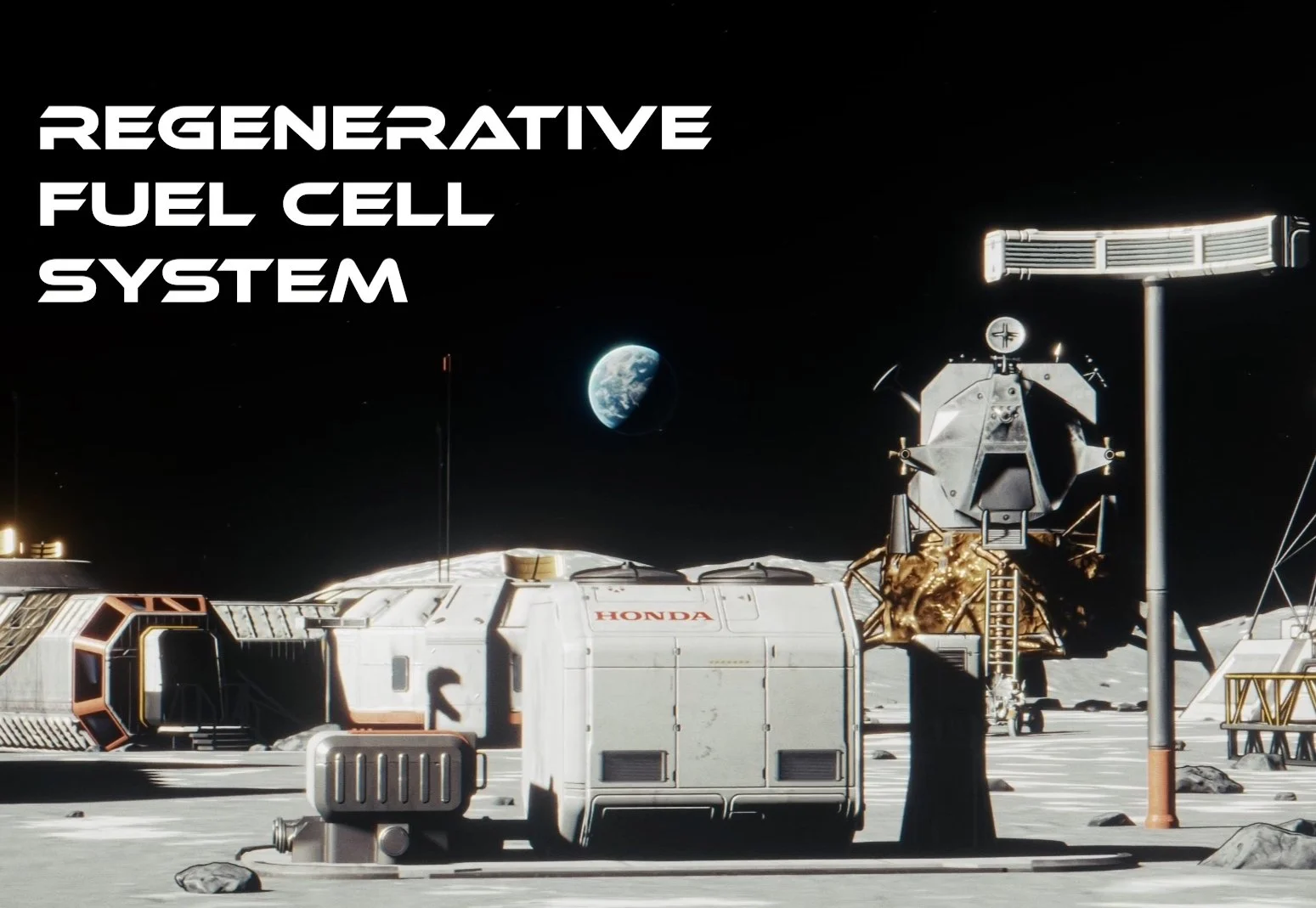Honda and Astrobotic to Power Sustained Lunar Missions
American Honda Motor Co., Inc. and Astrobotic Technology, Inc. today announce a joint development agreement to create a scalable, integrated power solution for sustained lunar surface missions. The feasibility study will examine how the Honda regenerative fuel cell system can work in conjunction with Astrobotic’s Vertical Solar Array Technology and LunaGrid service to provide continuous lunar power, even during prolonged periods of darkness on the Moon.
Honda’s regenerative fuel cell system, a circulative renewable energy system, uses solar energy and water to produce oxygen, hydrogen, and electricity. During the lunar day, the system stores solar power as hydrogen. During the lunar night, it converts that hydrogen into electricity. After power generation, the only byproduct is water, which the closed-loop cycle recycles through Honda’s high-pressure water electrolysis system. This approach supports reliable energy storage and zero-emission operation for lunar missions.
Astrobotic is building LunaGrid, a scalable power infrastructure service that will supply sustained lunar surface power for diverse missions and customers. A core element of LunaGrid is the Astrobotic VSAT, a solar-powered array that deploys rapidly, self-levels, and tracks the Sun for optimal energy capture. Astrobotic is developing a 10 kW VSAT and the Extra-Large Vertical Solar Array Technology, VSAT-XL, which targets 50 kW to meet rising power demands across planned lunar exploration and commercial activity.
Honda and Astrobotic will run a feasibility study with three main objectives. They will conduct detailed illumination studies to define power generation and storage needs at candidate LunaGrid sites. They will evaluate how the Honda regenerative fuel cell can scale for LunaGrid deployment. They will assess hardware and software integration between the Honda RFC and the Astrobotic VSAT to set system requirements that ensure reliable operation in future fielded systems.
By integrating the Honda regenerative fuel cell with the Astrobotic VSAT, the combined solution aims to deliver continuous power throughout the lunar night and extend its availability well beyond that period. This capability could enable longer mission durations, support a sustained human presence on the Moon, accelerate the development of lunar surface infrastructure, and power emerging commercial industries.
During the study, the partners will simulate one-year solar illumination profiles at multiple sites near the lunar South Pole using both the 10 kW and 50 kW VSAT systems. These simulations will determine the expected sunlight on the lunar surface, which will drive water electrolysis during the day, allowing the regenerative fuel cell to convert stored hydrogen into electricity throughout the night. Based on the modelled solar energy production, Honda will size its regenerative fuel cell system to meet energy storage needs across varied lunar mission scenarios.
Derek Adelman, chief engineer, Space Development Division, American Honda Motor Co., Inc., said: “The collaboration between Honda and Astrobotic marks a pivotal step toward creating scalable power solutions for long-term lunar surface missions. Powered by core Honda technologies, our regenerative fuel cell system is designed to provide efficient energy storage and regeneration to support sustained human life on the Moon as well as advance zero-emission applications on Earth.”
Bobby Rolley, Astrobotic’s Lunar Power Systems Architect, said: “Astrobotic’s LunaGrid is being developed to deliver reliable, continuous power for lunar surface missions, revolutionising the economics of exploration. By enabling survival through the harsh lunar night and extending mission durations from days to years, LunaGrid will significantly boost mission performance and data return per dollar invested. Our collaboration with Honda is a major move in this vision, as their scalable energy storage technology will enhance both LunaGrid and our Vertical Solar Array Technology (VSAT), expanding our overall power generation and storage capabilities.”





